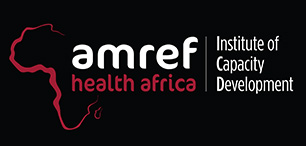In the last six years, progress has been made in Samburu County on reproductive, maternal and new-born health (RMNH) outcomes. Funded by the M-Pesa Foundation, Amref Health Africa and PharmAccess Foundation have been implementing the Uzazi Salama project, in partnership with the county government.
The county government has attributed improvements in RMNH outcomes to, among other reasons, contributions from development partners in improving the quality of health service delivery and strengthening community health systems. Uzazi Salama is one such intervention, which was purposefully designed to address major demand and supply challenges in the delivery of MNH services. This has resulted in significant improvement of MNH indicators like: a 22% increase (from 34% to 56%) in health facility deliveries; 9% increase in immunisation and 6% increase in ANC . These can be attributed to increased community education, capacity strengthening of health workers, as well as upgrading of health facilities to provide quality MNH services.
The last phase (March 2020 to March 2021) of the Uzazi Salama initiative implemented in the past one year was geared towards extending its engagement in Samburu County to further improve maternal new-born health coverage and foster sustainability of the health programmes at community, facility and county levels. The objectives of this phase were:
- To improve access and utilisation of quality maternal and new-born health services through increased social accountability.
- To increase programmatic, financial, partnership sustainability of the project initiatives.
The following interventions were conducted by the Uzazi Salama project to achieve the set objectives:
COVID-19 Response Activities
- Community Sensitization through use of Radio and Public Address System for SBCC
- Delivery of targeted key messages for CHVs through Leap on COVID-19 and MNCH
- Training/Capacity Building of the health workforce on COVID-19 through Leap and Jibu platforms
Objective 1: To Improve Access and Utilisation of Quality Maternal and Newborn Health Services through Increased Social Accountability
Strategy 1: Strengthen Health Financing
- Train HFMCs, CHVs and CSOs on public participation
Strategy 2: Quality Improvement
- Train and refresh six county quality official champions on quality improvement
- Validation visit I & II for 12 health facilities
Strategy 3: Multisector Supportive Supervision
- Quarterly Multisector Supportive Supervision
Strategy 4: Referral Transport
- Revive and Operationalise 10 Ambulances
- Advocacy to allocate and ring fence ambulance maintenance funds
Objective 2: To Increase Programmatic, Financial, Partnership Sustainability of the Project Initiatives
Strategy 5: Social Accountability
- Hold Social Accountability Forums
- Anti-FGM Declaration by Samburu County Elders
- Implementing the PDQ model in 25 health facilities
- Train CHVs on Social Accountability and Public Participation through the Leap Platform
- Hold Health Stakeholders Forums
- Hold and Support Data Review Meetings and Data Quality Audits
- Support Radio and Media engagements
-
The achievement of sustainability is a gradual process and requires more than a 12-month engagement with the county. There is need to embed these efforts at the start of any project.
-
Full implementation of the PDQ model in the health facilities is a high impact intervention in ensuring community participation in taking up corrective actions.
-
Multisector support supervision is a feasible model that other departments can adapt to ensure a whole holistic (sector-wide) approach to health and development challenges in the county.
Ministry of Health, Kenya Health Information system
M-pesa foundation for financial support, Samburu County Government department for support and providing a conducive environment.
Sarah Kosgei | Project Manager, ICD
[email protected]
